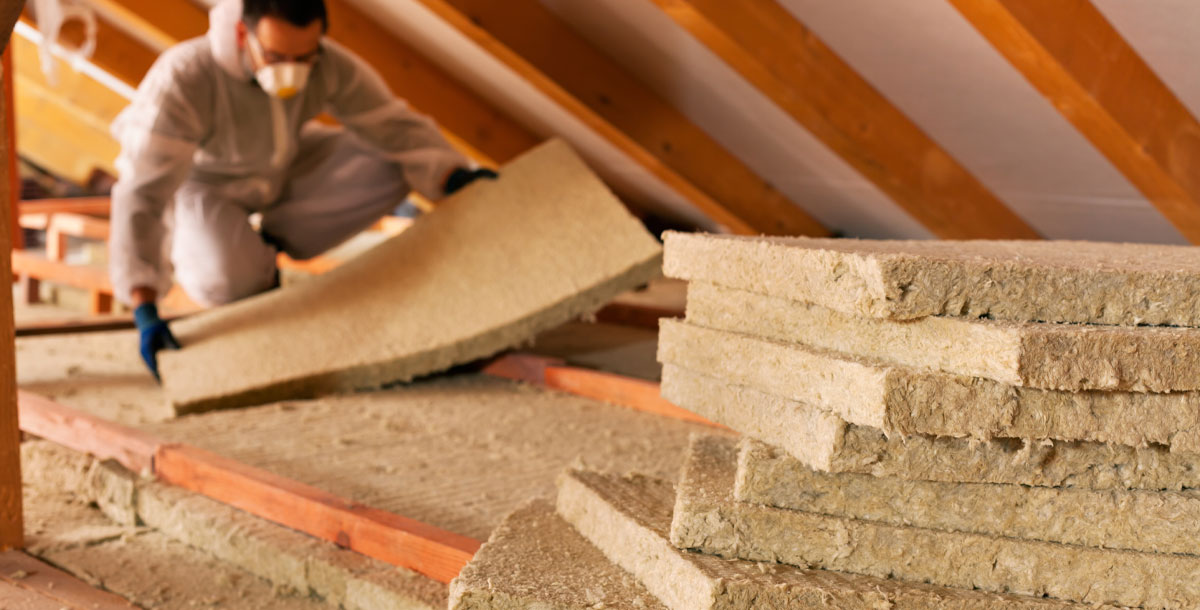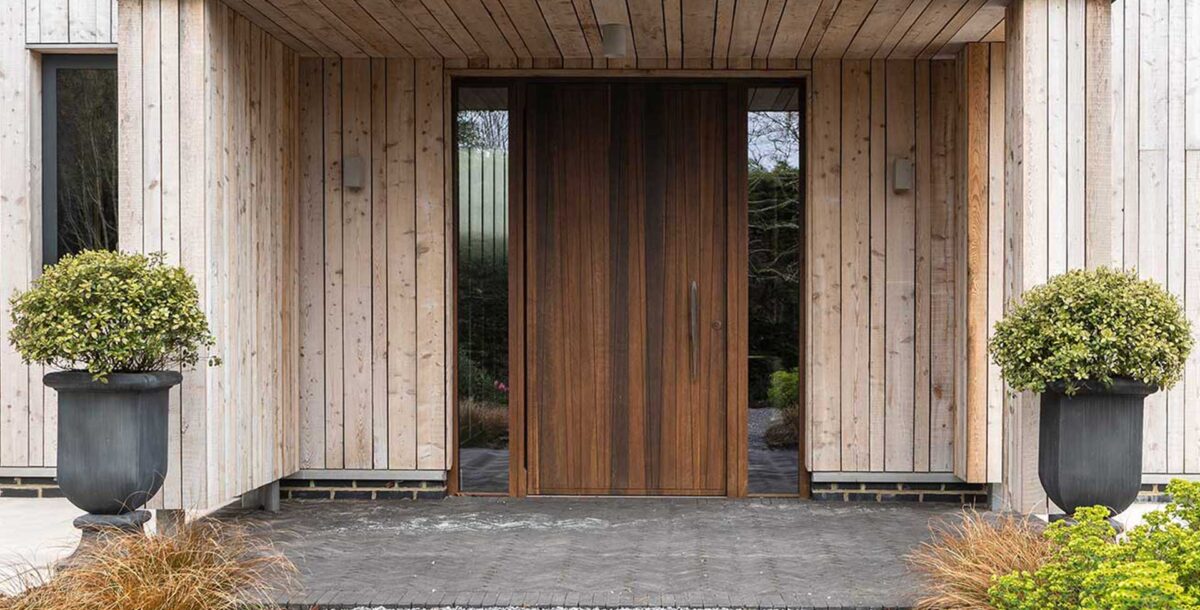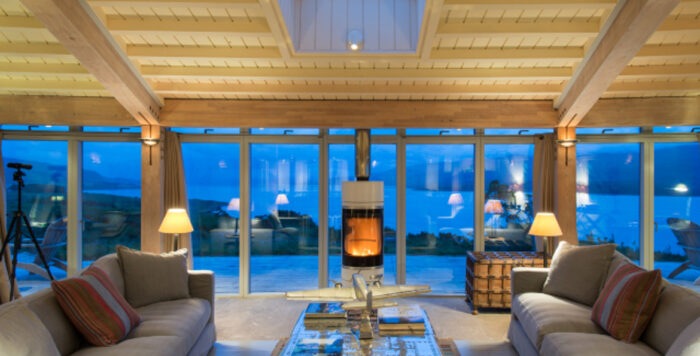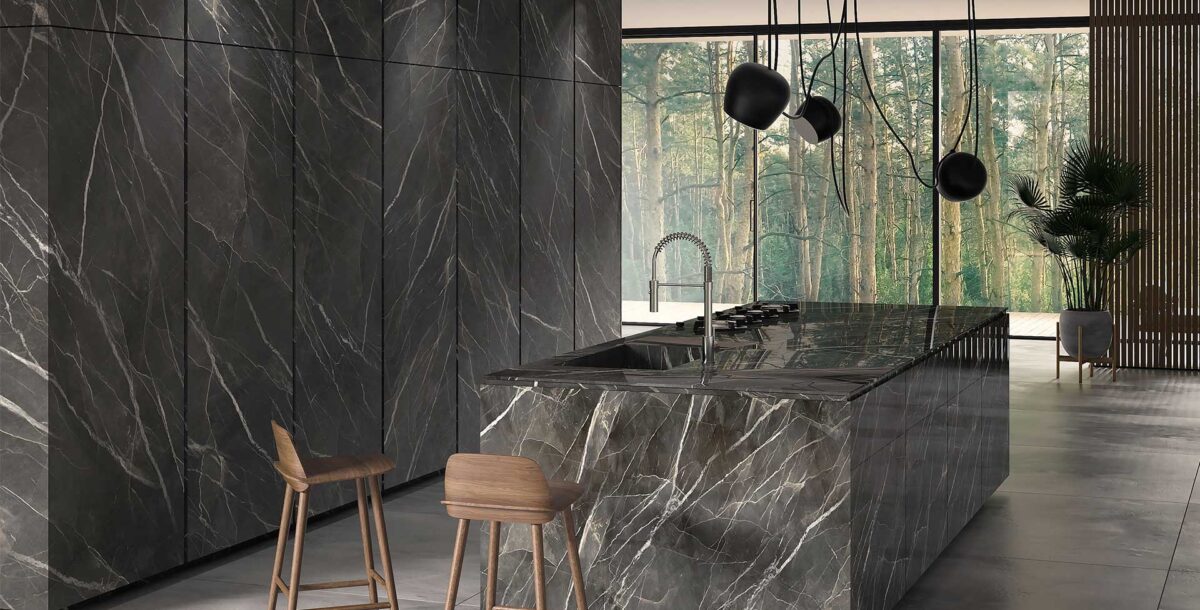How to insulate your home on a budget
Insulation will save energy and reduce fuel bills. But which measures offer the best value for money?
If you’re concerned about spiralling energy costs, adding insulation to your home is a great way to save energy and reduce fuel bills. But with the cost of building work increasing due to material and labour shortages, you may be wondering how to insulate your home on a budget. Or at least, how to get the most for your money in terms of offsetting insulation costs by reducing fuel bills.
Federation of Master Builders’ (FMB) member Alex Hunt, Managing Partner and Retrofit Coordinator at Bright Green Homes, shares his expert advice on getting the right home insulation for less.
In partnership with the Federation of Master Builders
Types of home insulation
With a mind-boggling number of insulation products available, it’s hard to know where to start. Here’s a quick run-down on the main types of home insulation available and which are the relatively cheap insulation options.
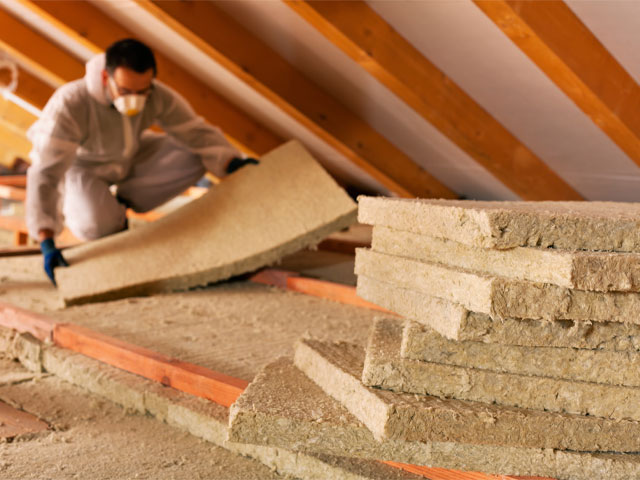
Loft insulation is a cost effective way of preventing energy loss. Photo: Arpad Nagy-Bagoly/Adobe
Mineral wool insulation
Mineral wool insulation is a cheap loft insulation solution. It comes in rolls, is made from glass or rock fibres and has a thermal conductivity value of about 0.044 W m2K. ‘It’s basically the fluffy stuff that itches,’ says Alex.
Uses: Loft insulation between joists, partition walls, suspended floors and ceilings
Properties: Extremely fire retardant
Sheep wool insulation
Naturally fire-resistant and non-irritant, sheep wool insulation has a thermal conductivity as low as 0.035 W m2K and can be used just like mineral wool. It’s more expensive, but considering it can last up to 60 years, it offers good value for money. Sheep wool insulation is ideal for period or heritage properties buildings that need to regulate humidity carefully as it retains condensation, releasing it slowly as it dries.
Uses: Loft insulation between joists, partition walls, suspended floors and ceilings
Properties: Sustainable, breathable and safe to use, but more expensive than other products
PIR and PUR insulation
PIR (polyisocyanurate) and PUR (rigid polyurethane) are board insulations that can be cut to size. PUR is also a spray foam. PIR has better fire resistance. ‘PIR is an open-cell foamwith lots of air bubbles in it and a thermal conductivity of 0.022 W m2K,’ says Alex. ‘It’s twice as insulating as mineral wool, so you need half as much to get the same insulating value.’
Uses: Wall cavities, insulated plasterboard, floors, rafters and heating, ventilation and air-conditioning systems
Properties: Long-lasting, less material needed
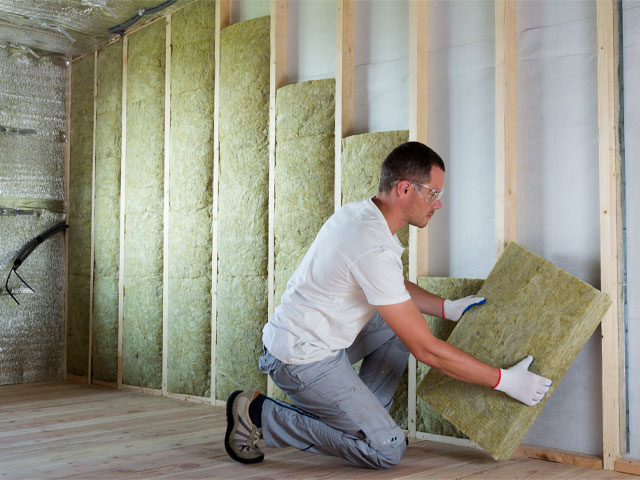
Installing rockwool insulation. Photo: Bilanol/Adobe
Phenolic foam insulation
Phenolic foam is rigid board insulation. ‘Phenolic is similar to PIR – it’s got lots of air bubbles in it,’ says Alex. ‘But in phenolic foam, each of those bubbles is surrounded by plastic, so it’s much more waterproof and more resistant to air and vapor movement through it. Phenolic foam tends to be slightly more insulating than PIR insulation, with the downside that it might cause condensation in certain circumstances. It’s also a good 25% more expensive.’
Uses: Cavity board, external walls, floors, rafters and heating, ventilation, and air-conditioning systems
Properties: Better fire resistance than PIR, low smoke level if it burns, water resistant, more expensive than other products
DPS/XPS/EPS polystyrene insulation
DPS/XPS/EPS polystyrene insulation is used both in board form and as loose beads for blown cavity wall insulation. ‘EPS has a thermal conductivity of around 0.031 W m2K,’ says Alex. ‘It’s light, so easy to transport and use. Polystyrene also retains its shape and thermal properties well over time.’
Uses: Cavity walls, insulation systems for external walls, floors and roofs
Properties: Light, low-cost, a good acoustic dampener, moisture-resistant and durable
Other natural insulation materials
In addition to sheep wool insulation, wood fibre panels, Jute hemp fibre and cork all offer a high-performing, eco-friendly insulation alternative to oil-based options like EPS and PIR insulation, or mineral wool, which uses a lot of energy in its manufacturing process.
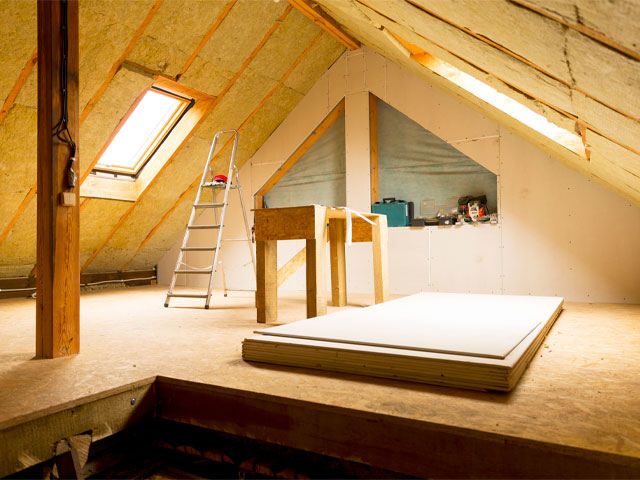
Protect loft insulation with boarding if the space is required for storage. Photo: Artursfoto/Adobe
How to insulate your home on a budget
If you’re keeping a close eye on your budget – perhaps living in a fixer-upper while gathering ideas and savings for your renovation project – there are plenty of quick and cheap insulation solutions to help reduce your energy consumption. They may be a temporary fix, but every little helps when wondering how to insulate your home on a budget and keep those fuel bills down.
First up, if your boiler is on its last legs, consider getting a new one: ‘If you can’t afford to go the whole hog with insulating your home and electrifying your heating, get a new gas boiler. If it isn’t condensing, it’s likely to be somewhere between 50-60% efficient, which means for every unit of gas you buy, you chuck half of it out of the house, whereas new gas condensing boilers are 90-95% efficient.’
You can further increase energy saving in the home with better heating controls – getting a smart thermostat installed with your new boiler. These learn your behaviour, switching the heating off when you don’t need it, saving both energy and money.
Loft insulation
When trying to how to insulate your home on a budget and looking for cheap insulation, look to the loft: ‘In terms of bang for your buck, loft insulation is the most cost-effective solution,’ says Alex. ‘It’s so simple, but there are still millions of uninsulated lofts in the country. I go into properties with somewhere between 50-100mm of loft insulation when they should have between 270-300mm. This is often because the loft is being used to store Christmas decorations, luggage and old Lego sets, which squashes down whatever insulation is there, making it less effective.’
To solve the problem of reducing the thermal efficiency of your loft insulation by piling things on top of it, invest in a loft boarding kit to create a raised platform above the insulation, which can be used for storage.
Loft insulation typically starts from around £300 for materials, but it can save you £180 a year on bills, so it can pay for itself in less than two years. If you’re planning to save on installation (which can also cost upwards of £300) by doing it yourself, read up on how to avoid condensation and rot, which can be an issue if it’s not done correctly.
Window film insulation
‘If you have single-pane glass, you can stick double-sided sticky tape around the frame of the window and fix on a heat responsive plastic that shrinks and stretches when you blast it with a hair dryer, forming a secondary film over the window,’ says Alex. ‘It’s effectively a kind of temporary DIY double glazing.’ You can pick these up for around £10 a sheet from Amazon. ‘There are similar reusable products that work with magnets so you can take it off in the summer to help keep your home cool.’
Draught excluders
Fit these around your doors to stop the wind whistling through. Draught excluders can cost as little as £10, yet could knock £30 a year off your heating bill, according to comparison service The Eco Experts. A draught excluder is one of the easiest and cheapest ways to reduce energy use.
View this post on Instagram
Avoid expensive mistakes
Adding insulation to an existing building without the right advice can lead to unforeseen problems such as condensation and damp. Nik Nelberg, Managing Director of FMB member company Earl & Calam Design & Build Ltd, recommends getting a detailed retrofit survey before starting any invasive work like cavity or solid wall insulation.
‘[Ensuring your home is well insulated] comes down to a good understanding of the existing building and what’s possible, how much it costs and what benefit can be achieved. Do the best you can with the money you’ve got, and maybe put something else off until you’ve saved up a bit more, rather than spreading your money too thinly or doing something badly that could cause you problems in the future.’
Read more about retrofit surveys and whole-house assessments here.
Find a trusted local builder
For further advice on how to insulate your home on a budget, consult a builder with insulation expertise. You can find a trusted local builder via the Federation of Master Builders’ Find a Builder tool. All of its members are vetted and independently inspected to ensure they meet the high standards of a Master Builder company, so you can build with confidence.
The Federation of Master Builders is campaigning for a national retrofit strategy that sets out how to upgrade the country’s housing stock to the highest levels of energy efficiency to help the UK meet its carbon-zero commitments.

